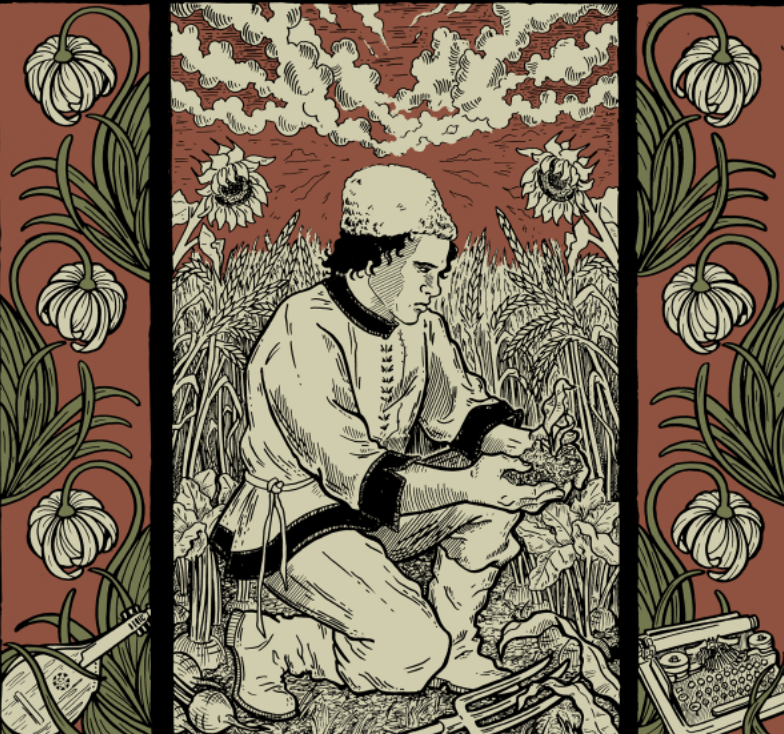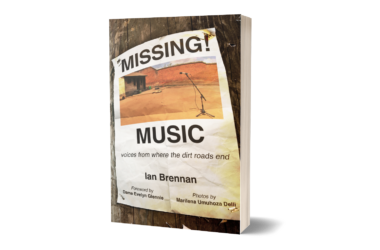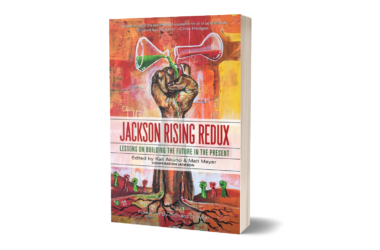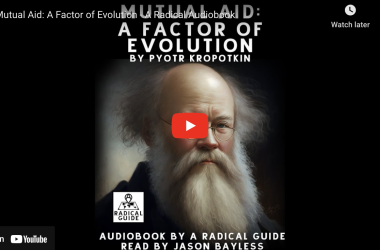By Charles Allison
Legends and folk heroes often pass into myth and immortality through the simple mechanism of avoiding death, or, more often, being pronounced dead when they are very much alive.
I cannot ponder the Russian Civil War or the subject of death without thinking of this quote from the writings of humorist anarchist-turned-Bolshevik and Czech literary icon, Jaroslav Hasek:
“During the course of my stay in Russia, which lasted some five or six years, from time to time I was killed and/or executed by various organizations and individuals.
When I returned to the fatherland, I found out that I had been hanged thrice, shot to death twice, and quartered once at the hands of savage Kyrgyz rebels on the shore of Lake Kale-Yshela.
Finally and definitively, I had been run through with a knife during a wild skirmish with drunken sailors in a certain Odessa tavern. Of all these variants, this one seems the most likely to me.”
This opening quip captures a truth that echoed especially loudly in the life of famed anarcho-communist militant, Nestor Ivanovich Makhno.
People widely considered heroes often have a long historiography of avoiding the reaper—erroneously or otherwise.
That is, it is significantly easier and more convenient for obituaries to be written and published than to make sure the person is actually dead.
This fact combined with his own derring-do and disregard for harm to his person, helped build up his heroic status among the peasants of Ukraine and in subsequent analyses of the batko, in his own time and ours. Of course, dodging death’s scrabbling claws is but one of many things that can create heroes out of men and women—charm, circumstance and plain luck are other factors.
Simply being claimed as a corpse doesn’t mean anything if people can’t imagine it being true. Nestor Makhno had close brushes with death from childhood (according to one source, he once tried to make home-made explosives on his mother’s stove and succeeded only in destroying a pan and giving everyone a fright, to name but one example) until the day he breathed his last in Paris, 1934.
Nestor Ivanovich Makhno was first officially declared dead (pending) in 1910 when he was still a teenager. He was arrested along with his anarchist comrades for attempting to blow up a secret police station in his hometown of Huliaipole in August of 1908. He spent quite some time in prison before his trial, where he was promptly sentenced to death.
However, after fifty-two days on death-row, Makhno was reprieved. The local governor decided to pardon him on account of his youth. Makhno was given the light sentence of a lifetime of katorga—hard labor in which the prisoners could not remove their eight-pound manacles and ankle shackles. He ultimately served the majority of his sentence in far-away Moscow.
In prison, Makhno remained as irrepressible as ever, spending frequent periods of time in solitary confinement for insolence and escape attempts. Makhno was familiar with the works of Bakunin, who famously wrote in God and the State that two things define humanity: “…the ability to think, and the desire to rebel.” By this measure, Makhno was extremely human—nothing seemed to keep him down for long—despite frequent stays in the prison hospital wing.
This irrepressibility was further bolstered by inspiration taken from reading Pyotr Kropotkin’s classic anarchist text, Mutual Aid (which Nestor claimed never to be without a copy of in his memoirs).
“I rebel,” Camus would write much later in the 20th century, long after Makhno’s death, “therefore we exist.” The creation of solidarity and resolve through the act of witnessing defiance and personal bravery was key to Camus’s philosophical writings—but to Nestor Makhno such a statement would belaboring the obvious.
He understood that actions inspire other actions and led, when physically possible, from the front. Solidarity through rebellion—this suited Makhno’s practical bent and preference for direct action over excessive theorizing.
The next time Makhno would be wrongly declared dead was in a world profoundly changed, that is, late 1918.
In 1918, Nestor was no longer behind bars. Nestor Makhno was released from prison with the other political prisoners under the Kerensky government in March of 1917 (negating his life sentence of hard labor). This set him and a host of other political prisoners at liberty.
A whirlwind of events followed: he returned home to Ukraine, then back to Moscow to avoid the occupying Austro-Hungarian forces, before finally returning back to his hometown of Huliaipole with limited Bolshevik aid. He managed to avoid death several times over during these wanderings, through luck and skill.
Makhno and the remains of the Huliaipole anarcho-communist groups that survived the chaos created a widespread anarchist-partisan movement resisting the Austro-Hungarians that swept his region of Ukraine, numbering in the thousands in a matter of months.
Of course, with wars come confusions.
Rumors spread that Makhno himself had been slain. One of Makhno’s squadrons of reconnaissance cavalry took heavy losses fighting near Novogupalovpka Station—many of their best fighters were wiped out by the Austro-Hungarians, who had allied with the local landlords and the wealthy.
Such was the anarchist’s outpouring of grief that nearby railway workers naturally assumed that such a wave of sorrow could only be for their leader, Nestor Makhno himself.
The rumor of Makhno’s death swiftly grew wings and traveled along the railways to the Austro-Hungarian high command—who desperately wanted to believe it. They also saw the real advantages of declaring that a major annoyance to their military ambitions was pushing up daisies.
The Austro-Hungarians swiftly published a newspaper article trumpeting that Makhno was dead. They even put it about that there would be a medal-ceremony in the nearby city of Alexandrovsk for the officers responsible for the slaying of the elusive Makhno.
That particular rumor didn’t last long. But it lasted long enough for the Makhnovists to take advantage of it. The Austro-Hungarians and the pomeschiks (rich peasants) allied with them attempted to lure some Makhnovists into an empty village in a seeming gesture of good will, trying to convince them to surrender. The anarchists weren’t fooled, and surrounded the village in question, capturing the troops meant to ambush them and executing the ones who resisted.
Makhno took further advantage of the rumor of his death and launched a series of reprisal-attacks on the estates of the local landed aristocracy, who were celebrating the news of his death. Makhno’s army went through Left Bank Ukraine, expropriating from the rich.
In his memoirs, Makhno mentions arriving at a party celebrating his death with his heavily armed comrades. The landlords and pomeschicks weren’t pleased to see him—you could hear a monocle drop. Makhno describes it like this:
“Many of the kulaks and pomeshchiks, seeing me at the head of our detachment, were dumbfounded and it took some time for them to recover from the shock. And when they came to themselves, rather than cursing the Makhnovists, they turned on their own leaders for lying about killing the one against whom they had long struggled, arming entire khutors against him. Now they had fallen into his hands, lulled by the lies about his death.”
Makhno then notes that the Makhnovists confined themselves to expropriating horses and carts in this instance, not bothering with such ‘small fry’. This wasn’t always how Makhnovist expropriations went (indeed, Makhno would have several nervous breakdowns during the course of the civil war prompted from the difference between justice and revenge in revolutionary ethics) but in this case, Makhno claimed to be merciful, writing:
“The khutors were no longer burned. Their owners, stunned by the sight of Makhno, whose death they had just finished celebrating—holding feasts and praising his killers, received a serious warning instead. They were to “smarten up” and confine their activities to peaceful labour, expunging from their wooden heads any thoughts that the Austro-German army in Ukraine was invincible and that, sheltering behind it, they could entrench their former privileges and power over the toilers.”
This cycle (pronouncement of the death/disappearance of Makhno only to have him shortly thereafter pop up like a spring crocus, winning a victory against that force or at least avoiding snares and disaster) would be repeated constantly throughout the Russian Civil War.
The Allied-funded White Army, Petliura’s Ukrainian Nationalists, the Bolsheviks—all would at various points make attempts against Makhno, only to have him survive. Each failed attempt on Makhno’s life—whether through assassination, betrayal or the mass charnel-house of open battle—added to his heroic reputation and obscured the man beneath the tales. Whether a deliberate strategy or a result of rumors, every couple of months Nestor Makhno would be declared dead by some power or another.
Of course, not every risk or close call is a volitional one, a deliberate choice.
There were dangers that Makhno couldn’t account for or control. Like a pandemic of typhus, for example, that killed between two and four million people from 1918 to 1922.
A flea bite could mean the difference between life and death. At the end of 1919, Nestor Makhno was dangerously ill with the disease. He came within a nose-hair of dying of it.
Makhno also took more risks that he strictly needed to on and off the battlefield. The Makhnovists had among the best cavalry in the conflicts that stretched from 1918 to 1921 and Makhno was involved in many actions personally—this was an era where close combat on horseback could involve swords and pistols after all—and paid the price for it in flesh. Like the renowned Spanish anarchist maquis, Quico Sabate, who rescued prisoners from Franco’s jail cells after World War II ended and robbed banks with impunity, Makhno’s daring and reckless courage was a key part of his appeal to his partisans. And certainly, a substantial part of Makhno’s persuasive power came from his down-to-earth, peasant vocabulary and manner and distrust of city-folk.
It’s hard to see how such a pattern wouldn’t lead to someone acquiring a heroic, nearly mythical reputation when he shared their hardships.
Courage is as contagious as fear, after all.
On a less responsible note, Nestor Makhno loved twirling his (loaded) revolver in meetings, a fact that doubtless both enlivened everyone in the meetings and made them speed things along. Nestor Makhno’s middle name was very definitely not “Gun Safety”.
Nestor Makhno suffered around a dozen major wounds from combat during the course of the war. The last of these wounds was a dum-dum bullet through the ankle that splintered—it was only by using the strongest possible language imaginable that Makhno prevented a Parisian doctor from amputating the foot after the Russian civil war. He still walked with a pronounced limp as a result for his last few years.
As historian Sho Konishi notes wryly: “The dead have been used for a variety of purposes by the living.” This applies doubly for people who are called heroes, in that their heroism acts as an insulator from criticism or nuanced understanding. Each escape from death, each grievous wound or sickness miraculously survived, built the legendary edifice around Nestor Ivanovich Makhno, a mythos around a once-breathing man.
Nestor Makhno the man made multiple mistakes with severe consequences (especially in something as confusing and horrifying as a civil war) which shouldn’t take away from his legitimate accomplishments and attempts to stay true to his revolutionary ethics—but neither should he be canonized, for the good of history and for lessons in future struggles.
I’ll let a quote from Michael Moorcock discuss the problems of heroism in the modern day, especially in the revolutionary context, where joy can be hard to find:
“In reality it is too often the small, fanatical men with the faces and stance of neurotic clerks who come to power while the charismatic heroes, if they are lucky, die gloriously, leaving us to discover that while we have been following them, imitating them, a new Tsar has manipulated himself into the position of power and Terror has returned with a vengeance while we have been using all our energies living a romantic lie. Heroes betray us. By having them, in real life, we betray ourselves [Emphasis mine].”
In short, the idea of heroism is an enemy to nuance and understanding. To simply call Nestor Makhno a hero and leave it at that does insult to the man and his sincerely held ideals. No matter how often one avoids death or defeat, one doesn’t stop being a human being, even if the word hero is attached. History—and the world it captures—is too beautiful, terrible and multifaceted a thing to be accurately represented with concepts like heroism.
Sources:
Albert Camus The Rebel
Colin Darch, Nestor Makhno and Anarchism in Rural Ukraine
Sean Patterson, Makhno and Memory
Malcolm Archibald, Atamansha
Alexander Skirda Anarchy’s Cossack
Nestor Makhno and Malcolm Archibald, Young Rebels against the Empire
Sho Konishi, Anarchist Modernity: Cooperatism and Japanese-Russian Intellectual Relations in Modern Japan
Jaroslav Hasek, How It Happened that I met up with the Author of my Obituary
Antonio Tellez, Sabate: Urban Guerrilla in Franco’s Spain
Michael Moorcock, Starship Stormtroopers








